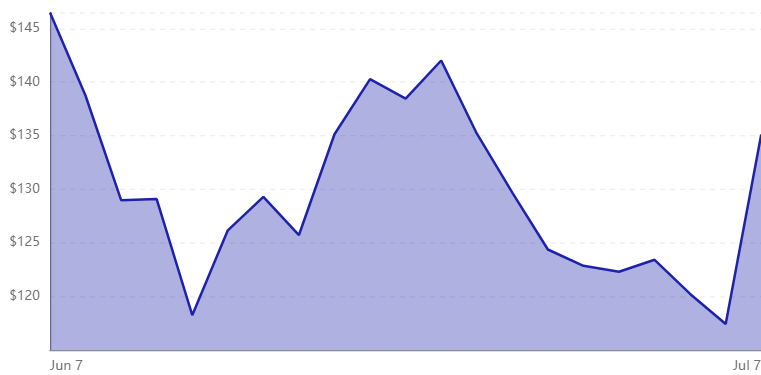This marks only the second time in its history the game-centric retailer is splitting its stock.
After being a wallflower for years, GameStop (GME) became a major player in the meme stock phenomenon. Retail investors flocked to the game and entertainment-focused retailer, driving its shares into the stratosphere. At one point early last year, the stock had surged more than 7,000% before falling back to earth. Shares are currently down 32% over the past year.
Now, GameStop is making headlines for a different reason. The company announced this week that it plans to split its stock for the first time in 15 years. This surprising move is sparking renewed interest among investors regarding how the stock split will work and what it means to shareholders.
 The details
The details
GameStop announced after the market close on Wednesday that its board of directors had approved a 4-for-1 stock split of the company's Class A common stock. The move will take place in the form of a special dividend -- meaning shareholders would be awarded additional shares of stock -- so no dividend in the commonly used sense of the word.
Specifically, shareholders of record as of July 18 will receive three additional shares of stock for each share they own. The newly minted stock will be distributed at some point after the close of business on July 21, and the stock will begin trading on a split-adjusted basis the following day.
From an investor perspective, shareholders won't have to do anything in order to take part in the stock split. As is common in these situations, the brokerage will take care of the details and the additional shares will simply appear in investors' brokerage accounts. It's worth noting that it can take anywhere from a few hours to a few days for the additional shares to show up. They may not appear immediately after the market close on July 21 as the process and the timetable can vary slightly from brokerage to brokerage.
It may provide a clearer understanding if we add some numbers to the equation to put this in context. For each share of GameStop stock an investor currently owns -- recently trading for about $130 per share -- after the split, shareholders will own four shares of stock valued at roughly $32.50 each.
Is a stock split a good thing?
A quick look at the example provided above shows that the total value of the investment won't change. For example, if an investor owns 10 shares of GameStop and the stock is trading at $130 at the end of the trading day on July 21, the total investment is worth $1,300. Likewise, before the shares begin trading post-split on July 22, that same investor will own 40 shares worth $32.50, for a total value of $1,300. So from an economic standpoint, a stock split is neither good nor bad -- it just is.
The pizza example is a popular analogy to illustrate the equation: Whether you have an unsliced pizza, or one cut into four pieces, that total amount of pie is the same -- it's merely divided differently. Likewise, GameStop stockholders will simply own a larger number of lower-priced shares.
Therefore, investors should avoid the temptation to buy shares simply because a stock split is on the horizon. It's important to note that, in recent years, the prospect of a stock split has drummed up excitement among investors, temporarily driving up the share price. Those gains are often fleeting, eventually giving way to business fundamentals and the company's business performance over the longer term.
Is GameStop stock a buy?
A look at GameStop's recent results should provide insight into the company's ongoing prospects, which is a better gauge than an arbitrary stock split. For the first quarter, revenue of $1.38 billion grew 8% year over year. At the same time, the company's net loss of $158 million surged 136%, a curious development for a mature company. This is particularly concerning since it resulted from selling, general, and administrative expenses that outstripped GameStop's gross profit. Even more troubling is the company's cash burn, which increased nearly 10-fold year over year to $314.7 million.
The news isn't all bad, as GameStop embraced its meme stock status in recent years to raise money and pay off virtually all of its debt. The company now boasts more than $1 billion in cash on its balance sheet, offset by just $42 million in long-term debt -- an enviable position for a business of its size.
GameStop is a company in the midst of a turnaround, slowly shedding its brick-and-mortar past while leaning heavily into its digital future. During pandemic-related lockdowns, GameStop was a go-to for gamers who flocked to its website for many of their gaming needs, for gear and collectibles to games themselves. The company continues to venture further into the digital realm with the debut of itsnon-fungible token (NFT) wallet and its focus on blockchain gaming, which many see as the future of the industry.
Given the uncertainty and the ongoing turnaround, investors would do best to consider GameStop as a small and speculative part of a balanced portfolio. However, given the company's track record and the uphill battle it faces, I find it hard to get excited about GameStop.
Source: The Motley Fool
Comments
Stocks go for a stock split, price adjusts and becomes more available to retail investors, and stock price increase because of higher demand